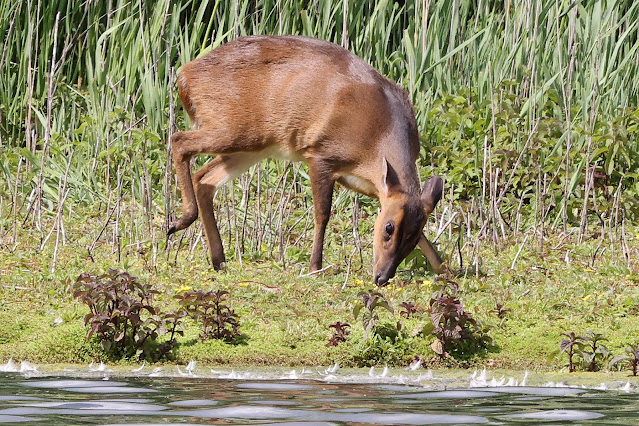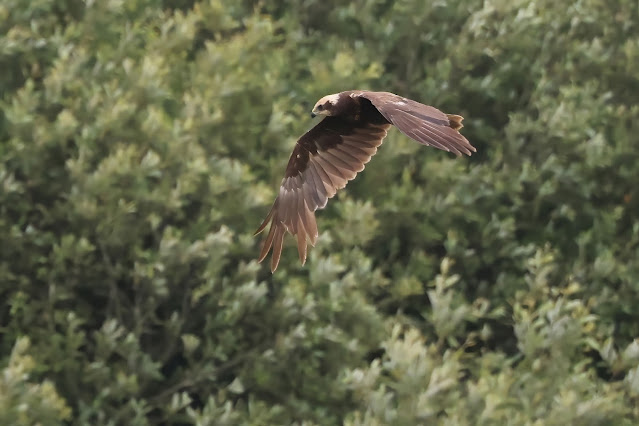19th June 2023
Slightly cooler today and a couple of hours to spare so time for a visit to the Draper Hide at Rye Meads. The scrape looked in perfect condition and bird-wise was fairly busy with a good selection of species present. Water levels were still quite high but there was sufficient margin at the back of the pool for a Muntjac to graze.
The resident Little Egrets were present as usual and showing nicely against the dark water. They can be so elegant!!
Most of the action came from the Black-headed Gulls which seem to have escaped the brunt of Avian Flu despite one or two corpses being evident.
Nest building was still going on despite the female sitting on eggs.
However much of the action came from the juveniles which were still exploring their new-found freedom. And it was quite noticeable that the juveniles were not tolerated near another adult's patch!!
Gadwall appear to be the commonest duck at Rye Meads these days, although when I was on site in the late 1960s they did not exist in Hertfordshire. Now they are out-performing Mallard.
Although it is only mid-June they are already starting to enter eclipse plumage with much preening going on.
Shoveler are also one of the species that go into early eclipse.
Both the local diving duck species, Tufted Duck and Pochard, were present. The female Pochard was accompanied by her brood which years ago would have been quite unusual.
And the new kids on the block, for me at least, were the three male Red-crested Pochards which were performing quite nicely.
And no visit to the Draper Hide would be complete without a close-up of the resident Little Grebe.
But the surprise for me today was the appearance of a female Marh Harrier which was hunting over the reed bed in front of the hide. From the hide I have sometimes seen harriers over the adjacent meadow, but this is the first time I have seen a harrier over the reed bed since the Draper Hide opened.








































No comments:
Post a Comment
Note: only a member of this blog may post a comment.